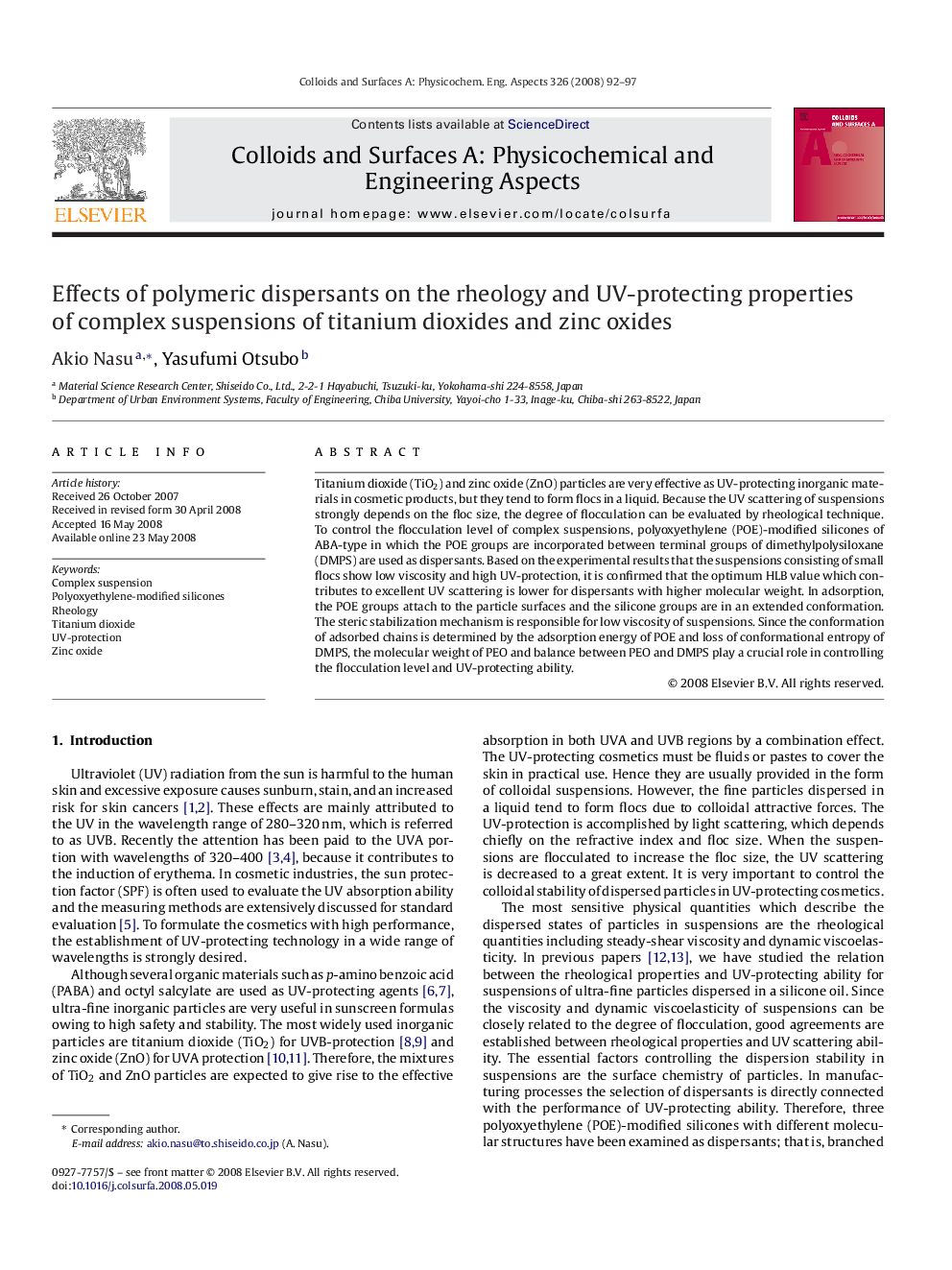| Article ID | Journal | Published Year | Pages | File Type |
|---|---|---|---|---|
| 596378 | Colloids and Surfaces A: Physicochemical and Engineering Aspects | 2008 | 6 Pages |
Titanium dioxide (TiO2) and zinc oxide (ZnO) particles are very effective as UV-protecting inorganic materials in cosmetic products, but they tend to form flocs in a liquid. Because the UV scattering of suspensions strongly depends on the floc size, the degree of flocculation can be evaluated by rheological technique. To control the flocculation level of complex suspensions, polyoxyethylene (POE)-modified silicones of ABA-type in which the POE groups are incorporated between terminal groups of dimethylpolysiloxane (DMPS) are used as dispersants. Based on the experimental results that the suspensions consisting of small flocs show low viscosity and high UV-protection, it is confirmed that the optimum HLB value which contributes to excellent UV scattering is lower for dispersants with higher molecular weight. In adsorption, the POE groups attach to the particle surfaces and the silicone groups are in an extended conformation. The steric stabilization mechanism is responsible for low viscosity of suspensions. Since the conformation of adsorbed chains is determined by the adsorption energy of POE and loss of conformational entropy of DMPS, the molecular weight of PEO and balance between PEO and DMPS play a crucial role in controlling the flocculation level and UV-protecting ability.
